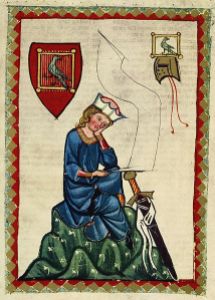In a letter from Pope Saint Gregory I to Leander, Bishop of Seville, the former waxes metaphorically, liberally using the image of a choirmaster conducting from the organ while accompanying the choir. The detail of the description suggests first-hand experience.
“For what is the office of the body other than the organ of the heart?” he wrote. “And however skilled an expert in singing might be, he cannot do justice to his music unless external services are also in harmony with it, because, of course, an organ that is broken does not spring back properly for a song, even when it is conducted by an experienced hand; nor does its wind produce an artistic effect if a pipe is split with cracks and is too shrill.”
“And so, how much more heavily is the quality of my exposition depressed, in which damage to the organ dissipates the charm of my expression, so that no skill gained from experience can compose it?”
This passage seems to reveal Gregory himself as an experienced choirmaster, even conducting solo singers, while using an organ to accompany them. While he may not have been responsible for all the musical achievements legend has attributed to him, his life was filled with opportunities to cultivate musical skills, especially on the organ.
This according to “Gregory the Great: On organ lessons and on equipping monasteries” by John Martyn (Medievalia et humanistica XXX [2004] pp. 107–113).
Gregory the Great’s Papacy began on this day in 590 C.E. Above, a depiction by Jusepe de Ribera; below, the Gregorian chant Salve regina.




